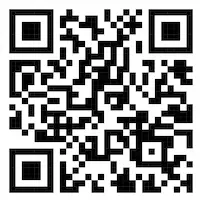
We now understand that a person's psychological state is closely linked to their thinking. In a state of depression, we tend to distort facts, as if looking at the world through grey glass: it appears less bright than through a clear one.
Depression warps our ability to see the world objectively, adding elements to our perception that do not contribute to improving mental health and optimism. Today, we will discuss some of these features.
We talk about cognitive distortions, also known as thinking errors, a key element in cognitive-behavioral therapy.
To understand cognitive errors, let's examine what cognition is. It's the ability to recognize, comprehend, and process information received through the senses.
Cognition helps us perceive, understand, and remember the world around us, as well as make decisions and solve problems.
In short, cognition is the cognitive process involving thoughts, images, representations.
Thus, cognitive distortions are errors in thinking that occur when processing information in the brain, hindering logical thinking.
More content in our app
You're only seeing a portion of the content. In the app, you'll find numerous interactive articles. Additionally, there are psychological tests to track your mood dynamics, a daily planner, an automatic thought journal, and much more!

These are distortions in the interpretation of the meaning of events, when a person's view of reality does not match the facts and reality itself.
If our thinking is mired in distorted symbolic meanings, illogical reasoning, and erroneous interpretations, we become blind and deaf to reality.
Aaron Beck
In our application, we have highlighted the most important cognitive distortions, which can be studied on the corresponding page in the automatic thoughts journal.
In this course, we will examine in detail the three most common errors. Let's start with the 'ought-to-be' distortion.
Ought-to-be consists of rigid beliefs about what should or should not happen. These beliefs generate demands on oneself, others, and the world.
This distortion is extremely common: we create a rigid model of the world, and when reality does not meet these standards, we experience negative emotions.
Examples of ought-to-be thinking:
The word 'must' implies a lack of alternatives, although in reality they often exist. Ought-to-be thinking creates an illusion of a perfect world, and when we step beyond its boundaries, we face harsh reality.
This distortion deprives us of choice, setting a condition: either act in a certain way or experience feelings of guilt and other unpleasant emotions.
What is the danger of ought-to-be thinking? In adaptive thinking, a discrepancy between representations and reality does not cause problems, as a person understands that not all desires are achievable.
However, in maladaptive thinking, one's model of the world carries more weight than reality. The model is perceived as absolute, and reality as erroneous.
How to work with this distortion? The first step is awareness. Monitor your thoughts and record them when they contain 'must', 'have to', 'should'. This will help you understand how 'ought-to-be' thinking affects your emotions.
The second step is challenging. Ask yourself: 'Why do I believe it must be this way?' and 'What evidence is there that it must be so?'
The third step is seeking alternatives. Replace 'must' with 'would like to' or 'it would be nice'. For example:
In conclusion, we invite you to practice detecting and mitigating the 'ought-to-be' cognitive distortion in your daily life. Begin with careful observation of your thoughts and reactions in various situations.
Pay attention to moments when you tend to use words like 'must', 'have to', or 'should', and ask yourself questions to challenge these automatic thoughts.








